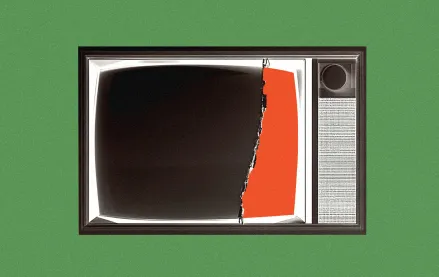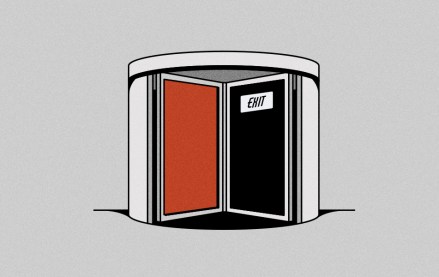Save 50% on a 3-month Digiday+ membership. Ends Dec 12.
As would-be buyers and critics circle, WPP’s siege mentality deepens

The eulogies for WPP keep getting drafted, yet the holding company refuses to play along. That’s the subtext running through a wave of conspicuously aligned LinkedIn posts in recent weeks, each one offering a reminder that the onetime market leader is still very much in the game.
“There’s been a lot of negativity around WPP,” wrote one WPP Media director. “But as the dust starts to settle, we are seeing wins happen more and more.”
“All the negativity around WPP Media is incessant,” posted an exec at WPP Media’s Choreograph unit, a day later. “There is a lot of noise right now which doesn’t reflect what’s really happening,” added a third WPP Media exec.
Whether the posts were coordinated hasn’t been confirmed; a WPP spokesperson didn’t respond by time of publication. If they weren’t, the parallels are striking enough to feel like choreography – the same tone, the same defensive posture, the same insistence that the narrative around WPP has veered into exaggeration.
And yet, if anything the posts serve to reinforce the narrative around the business. The company has bagged a handful of wins this year (Reckitt, Mastercard and Johnson & Johnson, to name a few) but it has also shed a significant share of its market value, lost a host of marquee accounts and issued two profit warnings. The idea that critics are somehow overstating the pressure and unjustly piling indignities upon the company’s “unsung heroes,” to quote one post, doesn’t quite hold against reality.
If this was part of an organized effort to redirect sentiment, it would hardly come as a shock. Linkedin has become a standard instrument in the corporate PR toolkit. Firms that want to rebalance the books of public opinion will often encourage their own leaders to turn to the platform as employee influencers.
“Correcting the record through the professional connections of LinkedIn is a good strategy. It can be – if it’s genuine,” said James Donnelly, evp, issues and crisis at M Booth.
The Trade Desk’s Jeff Green began embracing a late-career transformation into an ad industry influencer following his company’s earnings misstep earlier this year, for example. Such turns aren’t just about projecting strength to clients and critics, but can also help shore up internal unity in a time of crisis.
“If an employee sees their managers out there publicly, on LinkedIn, carrying the flag in one way or the other, then they can rally behind that,” said Richard Dukas, chairman and CEO of Dukas Linden Public Relations.
That doesn’t mean it’s a foolproof plan. “There’s a mirror image … if employees of a company going through a crisis are seeing LinkedIn posts that are not living the reality they’re facing internally, it’s not going to do well for morale,” said Donnelly.
Whatever led to this string of posts, it’s clear that there’s something of a siege mentality that has set in at WPP.
After all, new global CEO Cindy Rose’s early moves signaled an ambition to aggressively streamline operations and reorient toward AI-driven services. Client moves have not been exclusively one-way traffic, and WPP is hardly the only marketing services group struggling; the bomb throwers at S4 Capital, for example, have also been languishing while IPG and Dentsu have experienced sharp revenue declines. Against that context, the holdco’s execs clearly feel they’ve become the industry scapegoat.
“It’s like some people want to see failure,” opined another post.
But positivity on social media will not fix WPP’s deeper commercial issues or dispel the chance of a break-up.
For Havas to take a minority stake would be an unlikely outcome, noted M&A consultant Jim Houghton of Waypoint Partners; the French holdco’s CEO Yannick Bolloré told employees that “we are not in discussions with WPP” in an internal memo this week.
But to the right buyer WPP Media, Ogilvy and VML are reasonable investment targets. And WPP has sold off businesses in the past, including the PR company FGS in 2024.
“What those companies have had out of WPP for years has been centralized back office, centralized procurement and a requirement to report margins every quarter, not a lot of actual shared infrastructure,” said Houghton. “So, could you unplug Ogilvy from WPP and make it a successful business? Yeah, you could, to be honest.”
That WPP is attracting these kinds of moves and countermoves from industry rivals is ultimately a sign of its current situation – and not just a narrative figment.
“This isn’t just a pure reputational thing,” added Houghton. “There’s some real business issues going on there that need a solve.”
More in Marketing

Pitch deck: How Amazon is recasting Twitch as a core part of its CTV pitch
Amazon is positioning Twitch as a defining asset in its CTV ambitions.

Netflix transforms former mall department stores into experiential venues
The location in Dallas opens this week, and one at the King of Prussia mall near Philadelphia opened last month.

Future of Marketing Briefing: AI has created a new talent paradox in programmatic agencies
The job isn’t execution anymore. AI handles that. The job is judgement.








